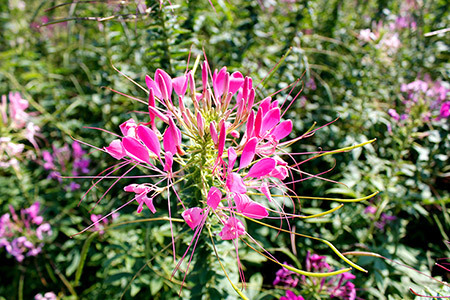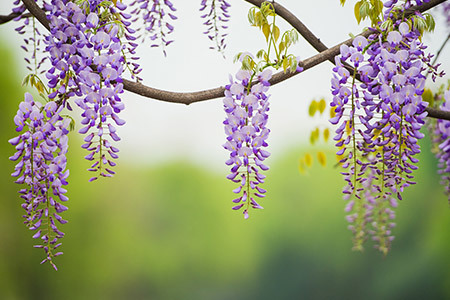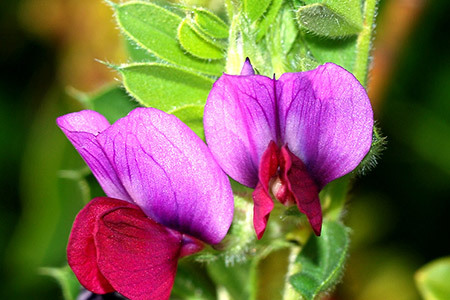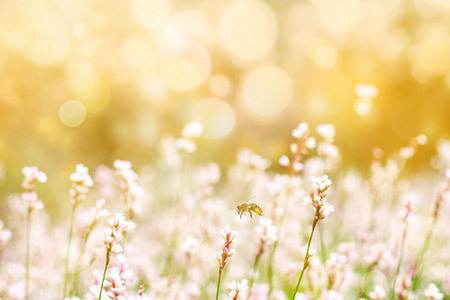What should we do when strong cold air frequently hits and flowers and trees suffer from frost and snow damage?
Release time:
2021-04-22 09:00
Source:
The weather in early spring is changeable, often bringing waves of cold air and strong temperature drops, leaving the flowers and plants in nurseries and landscaping projects at a loss. Recently, rain and snow have appeared in the central and eastern regions of our country, with frequent temperature fluctuations in many areas.
The late spring cold is the most likely to cause problems for flowering seedlings. What should we do? Let's start with the damage caused by low temperatures and ice.
Types of Damage
1. Mechanical damage: The main symptoms of this type of damage include broken trees, cracked trunks, separation of bark from wood, and severe bending of trees. This occurs when temperatures drop below 0°C, and after snowfall or icing, the accumulation of snow or ice on the tree exceeds the weight that the tree can bear, causing it to bend or break. Generally, young trees under 3 meters are more likely to bend, while trees over 4 meters are more likely to break.
2. Physiological damage: This type of damage is a phenomenon caused by severe harm to various tissue cells of trees due to low temperatures and freezing.
After freezing, plants generally show poor growth. Leaves that are frozen may turn white and become paper-thin in mild cases, while in severe cases, they wilt and turn yellow. Frozen branches may develop small cracks in the bark, making them susceptible to disease invasion, leading to branch-related diseases; the internal branches may become blocked by resin-like substances, hindering the transport of nutrients and water, causing discoloration and necrosis in the blocked areas, and resulting in wilting of the upper branches and leaves due to lack of water. The roots may grow slowly or stop growing in mild cases, and in severe cases, the roots may turn black and rot.
It is important to note that the freezing damage to trees may not occur in just one form. In most cases, mechanical damage is accompanied by physiological damage. However, physiological damage does not necessarily mean that mechanical damage will occur.
Moreover, the occurrence of frost damage is not limited to the cold northern regions. Frost damage in southern regions should not be overlooked, especially for newly transplanted plants from last year, marginal tree species, and exotic tree species, which are severely affected by frost. Additionally, the plants affected by frost are not limited to trees; hedges, shrubs, lawns, flowers, and ground covers may also suffer from extensive frost damage.
In the face of widespread frost damage, timely rescue is key. Preventive measures must be taken in advance; waiting for the characteristics of frost damage to appear before taking action is too late.
Countermeasures
1. Responding to mechanical damage: Depending on the severity of the tree being bent or broken by accumulated snow, different methods should be employed for rescue.
For small trees that have fallen, they can be propped up and replanted in a timely manner based on the weather and soil thawing conditions. Branches that have been broken by snow and ice should be pruned neatly, and wound healing agents should be applied promptly. If the roots are damaged due to falling, they should also be pruned and disinfected before replanting. After covering the soil, straw mats or insulation cloth can be used for warmth, while ensuring proper support.
If tall trees with broken main trunks or side branches are involved, the broken branches should be pruned off, ensuring that the cut surface is smooth and at an angle of 30° to 45° to the ground. When pruning, care should be taken to "lightly prune light injuries and heavily prune severe injuries." After pruning, the cut surface should not accumulate water to avoid rot. It is better to apply wound healing agents after pruning to promote healing. For trees that have broken at the root neck, it is recommended to saw them off directly at the root neck and replant.
2. Responding to physiological damage: For flowering shrubs, after the temperature stabilizes and rises above 10°C, plant antifreeze solutions and functional foliar fertilizers such as amino acids, humic acid, and alginic acid can be sprayed. If there are microbial organic liquid fertilizers, the effect is even better. Timely watering with sufficient green recovery water should be done, and organic fertilizers should be applied during the budding growth period to strengthen water and fertilizer management. For seedlings with frozen branches or stems that need recovery, integrated products of fertilizers and pesticides can be sprayed to prevent diseases and necrosis in frozen branches and accelerate the healing of the affected areas.
For large trees, if the frost damage is not very severe, when the temperature stabilizes and rises above 10°C, plant antifreeze solutions and functional foliar fertilizers such as amino acids, humic acid, and alginic acid can be sprayed, or microbial organic liquid fertilizers can be used, with intervals of 10 to 20 days between sprays.
Severely frost-damaged trees often have varying degrees of frostbite on the main trunk or major branches, making them highly susceptible to bacterial infections that can lead to dry rot. The visual symptoms include ulcers, oozing, and gumming. In the rapidly warming spring, as the leaves increase their evaporation of moisture, the water transport in the affected branches significantly decreases, leading to dehydration and wilting of the leaves, and in severe cases, the entire tree may die.
Therefore, for small areas of dry bark that have been frozen, the rotten parts of the trunk can be scraped off, and then methyl thiophanate and wound healing agents can be applied. If there is extensive damage to the dry bark, methyl thiophanate can be mixed with liquid film and other whitening agents and sprayed on the trunk to prevent further damage to the dry bark. For trees with poor growth, combining infusion and foliar fertilization, as well as root fertilization, can significantly enhance recovery.
After pruning the frozen branches, the entire plant should be promptly sprayed with S-inducer to enhance the plant's resistance. At the same time, the trunk should be whitened to delay the time of budding and flowering, avoiding further harm from late spring cold. Additionally, a transparent liquid film can be sprayed to protect the leaves and buds from freezing again.
For root recovery, it is important to loosen the soil, expand the tree pit, and water sufficiently with green recovery water combined with organic fertilizers and medicinal fertilizers to accelerate the recovery of tree vigor and nutrient replenishment. After the temperature rises, timely irrigation with rooting agents should be done to promote root growth. If the root neck is rotten, after scraping off the rotten parts, irrigation or spraying with rooting agents and soil disinfectants should be done to disinfect and sterilize both the roots and the soil. After treatment, regular irrigation with water-soluble fertilizers containing humic acid should be done to strengthen the roots. Trees that are weak and in poor site conditions should be given special care.
The treatment of frost damage is urgent, and taking comprehensive measures to reduce and repair frost damage is the primary task at the beginning of this spring. Additionally, after plants are frozen, they are highly susceptible to pest and disease attacks, so subsequent pest and disease management should be strengthened. For plants affected by frost damage, increasing fertilizer application after winter and timely watering can promote the affected plants to recover growth as soon as possible; foliar fertilizers and growth-promoting regulators can also be mixed and sprayed to promote the recovery of branches and leaves.
Previous Page
Related News
Our company is a professional firm focused on selling flower seeds, forestry seeds, pasture/green manure seeds, and other types of seeds. We are dedicated to providing customers with high-quality and diverse seed products to meet various plant growth needs.
Manual for Cultivating Green Plants
Green plants are an indispensable part of our lives. They can purify the air, reduce noise, and provide a comfortable environment. This manual aims to help friends who love green plants to better cultivate various types of green plants, allowing them to thrive.
How to plant the willow-leaf embroidered chrysanthemum?
The willow-leafed chrysanthemum is a beautiful flower, loved for its unique leaf shape and vibrant blossoms. Below is an introduction on how to plant willow-leafed chrysanthemums.
Cultivation of Red Leaf Barberry
The red-leaf barberry is a deciduous shrub belonging to the Berberidaceae family and the Berberis genus, and it is a variety of barberry. It prefers sunlight, is somewhat shade-tolerant, cold-resistant, drought-resistant, and can withstand pruning. The branches are reddish-brown, and the leaves are oval-shaped, either solitary or clustered, remaining red throughout the year. The flowers bloom from May to June, are yellowish-white, and the fruits turn bright red and beautiful when ripe. It can be used to decorate flower beds and flower mirrors, and is an important tree species for color block combinations in landscape greening.
To take good care of flowers, watering them is crucial. However, many novice flower growers tend to be overly diligent, taking care of their plants even more frequently than they eat, and they feel that watering the plants a few times a day is still not enough. This can easily lead to root rot and death of the plants, which is indeed quite frustrating. In that case, why not grow a few water-loving flowers? The more you water them, the better they grow, making them perfect for those who love to water their plants frequently.
Urban greening is an important component of urban construction.
Urban greening is an important component of urban construction, aimed at improving the urban environment and enhancing the quality of life for residents. In this process, flowers play an indispensable role. They not only beautify urban spaces but also provide residents with a pleasant visual experience.
Product recommend








